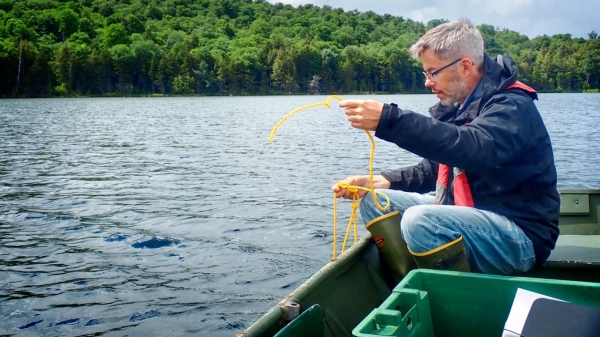Climate warming and lake browning – when dissolved organic matter from forests turns the water tea-brown – are making the bottom of most lakes in the Adirondacks unlivable for cold water species such as trout, salmon and whitefish during the summer.
A new study, “Concurrent warming and browning eliminate cold-water fish habitat in many temperate lakes,” forthcoming in the journal Proceedings of the National Academy of Sciences, found that only about 5% of Adirondack lakes may continue to maintain water that is cold and oxygenated enough to support cold-water species given current trends.
New York’s Adirondack Park is a state protected area where forests and lakes have been buffered from heavy development and pollution. It serves as a stronghold for many cold-loving wildlife species.
Read more at: Cornell University
Stephen Jane deploys a sensor in an Adirondack lake. (Photo Credit: Eileen Randall)


